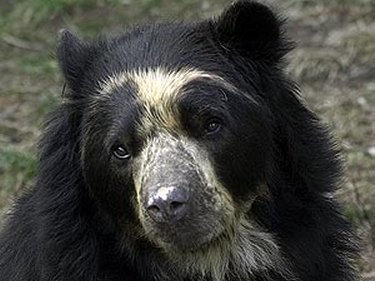Sometimes art holds a mirror up to life, sometimes life imitates art. Wednesday’s story of exotic animals on the rampage in Zanesville, Ohio had me thinking we were in the middle of the John Irving novel Letting the Bears Loose.
The story, in case you missed it, involved the owner of an exotic animal preserve releasing all of his animals before shooting himself. (You can read about the incident here.) The lions, wolves, tigers and bears are considered dangerous and have been hunted down–17 lions and 18 rare Bengal tigers (!) have been killed. Apparently the authorities feel they have to shoot them rather than put them to sleep them because, when feeling the effects of a tranquillizer, the animals go into hiding.
In Irving’s 1968 novel (his first), a free-spirited college student sets out to release the animals in the Vienna Zoo shortly after World War II. At first it appears that he has embarked on a quirky and somewhat surreal quest against a tyrannical zookeeper, and the reader becomes invested in his success. But the prank turns sour since the animals are in no shape to survive in modern day Europe. The zebras, for instance, must negotiate traffic:
The low sturdy zebra herd came in a noiseless wave across the lawns, weaving through the shrubs—shifty, and able to fool the three-some set of hunters and the two-man saw. The zebras came out over the curb in front of me, their hooves sparking off the cobblestones. Their own clatter startled them; they zigzagged between parked cars, crossing the sidewalk and bolting down tiny Wolter Gasse, where onrushing headlights turned them back—again across Maxing Strasse—and once more drove them into Maxing Park.
In the book, something gashes a Siberian ibex, a snow leopard mangles a gaur, and a great gray boomer takes out a man wielding garden shears. In Zanesville, a lion killed a monkey and a “big cat” was run over by a car. And then there were those dozens of animals killed.
Like other such anarchistic dreams from the late 1960’s, the student’s dream of freedom doesn’t mesh well with the facts on the ground. That, however, doesn’t keep him from continuing to fantasize about a day when Austria will be populated with spectacled bears. His statement that “something had been harmlessly disrupted” shows that he’s not willing to face up to the consequences of what he has done:
A little something had been harmlessly disrupted and I certainly don’t imply that it made all things frotting rosy. Only that I was able to sincerely imagine coming again this way, some Wednesday. And meeting someone from the area, who would tell me: There are bears in Klosterneuborg.
Really?
Oh yes. Bears.
But they’ve done no harm?
Not these bears. They’re strange bears.
Rare Spectacled Bears?
Well, I don’t know about that.
But they’re multiplying?
I don’t know about that either. But they’re very friendly with each other, you know.
Oh yes, I know.
And that was a little something to know, anyway.
Irving may encourage us to dream of turning back the clock to an Edenic time when non-human mammals reigned supreme. He also tickles our surrealistic imaginations with exotic animal names. But he then abruptly lets us know that we have to grow up and live in this world. At a time when we see anarchistic fantasies unmoored from reality dominating our political landscape, along with a refusal to face up to the responsibilities of governing, it’s a lesson that’s still relevant. Something has to be done with all those animals.


